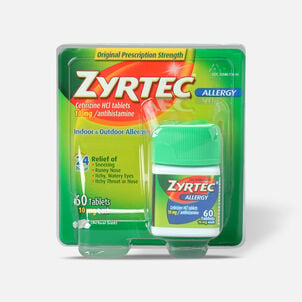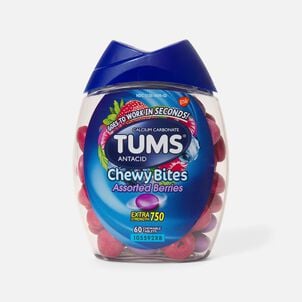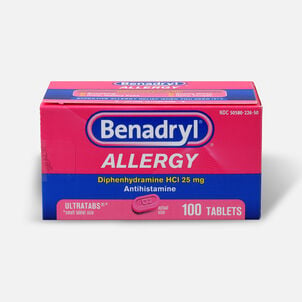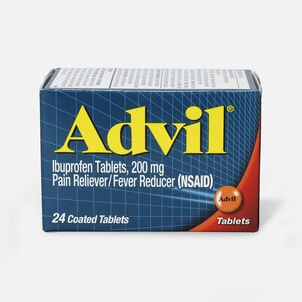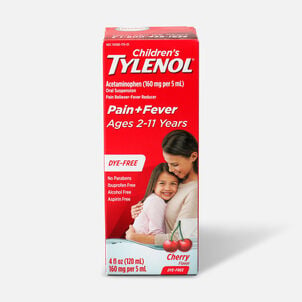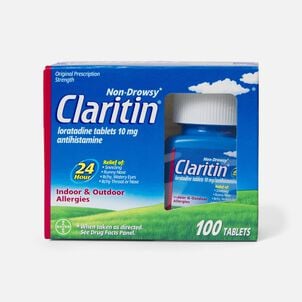A timeline of tax-free health care
Flexible spending accounts (FSAs) and health savings accounts (HSAs) are currently the most popular consumer-directed, tax-free health care accounts in the U.S. today. The term "consumer-directed" refers to insurance plans that pay for common medical expenses like checkups and emergency care, but also contain a separate account to help you further reduce your out-of-pocket health care costs.

So why would anyone pay for their own health care expenses when insurance can do it instead? In short, the tax savings! In the case of FSAs and HSAs, you can elect to set aside your money through deductions from your paycheck before that money gets taxed.
Because the money is set aside before taxes ("pre-tax"), it ultimately lowers your overall taxable income. This means you pay less in taxes while also being able to use the funds pay for eligible health care services like copays or products like Band-Aids, that you would normally pay for out of your own pockets.
Consumer-directed health care is an idea that first emerged during the mid-20th century and has evolved over the last 50 years. To help you understand the power of these accounts, let's explore how these health care options came to be over the past several decades:
1960s – Employer-driven health coverage begins
As is the case today, in the 1960s, health care benefits were paid for by employers. But, in the latter part of the decade, rising inflation caused a spike in the price of health benefits and employers started to look for ways to reduce their costs. They ultimately found an answer in two ways: the first was through introducing many of the features of modern health insurance plans like deductibles and coinsurance, which exist so employees remain responsible for a portion of their own health care costs and offset the burden to the employer.
The second way was to scale back on the benefits the plans offered which reduced coverage and the quality of employee health plans inevitably suffered. These leaner health plans had smaller physician networks, as well as less coverage for medical specialists and specific treatments.
Without the same level of comprehensive coverage to rely on, some employees were forced to go out of their physician networks to get the care they required. And they had to pay for their health care costs out of their own pockets, with money they had already been taxed.
1970s – Health reimbursement accounts are developed to offset rising health care costs
One of the earliest forms of consumer-directed health care is the health reimbursement arrangement (HRA), also known as a health reimbursement account, which attempted to work around these rising costs. HRAs were conceived as a grand bargain between employers and employees to offset the growing cost of health coverage. HRAs are set up by the employer, and the employer contributes a specified amount to each participant's HRA.
Employees can use these funds for qualifying products and services. HRA plan structure was largely left up to the employer, but they would typically cover deductibles, copayments and coinsurance payments to provide financial relief for employees.
Reimbursement payments through an HRA for medical expenses was a step in the right direction -- employers got additional tax relief and employees had more money to spend on qualified health expenses. But the tax relief was significantly greater for employers.
1978 – Tax reform creates flexible spending accounts (FSAs)
The Revenue Act of 1978 was a major piece of tax reform that also created the flexible spending account (FSA) as one of its key features. FSAs were created to combat some of the common issues of the HRA, namely that employers would reap the majority of the tax benefits, and employees were not able to contribute, which was a major problem if they had more advanced health issues to cover.
FSAs were created to put power back in the hands of consumers, who could make more efficient use of pre-tax health care dollars to match their unique needs. These accounts were designed to function on a year-to-year basis, and were subject to a "use-it-or-lose-it" rule. This meant that money set aside through regular payroll deductions must be used by the end of each plan year or the remainder would be forfeited to one's employer (enter: the major incentive to employers to cover the cost of an FSA program).
FSAs were the first accounts to put buying power directly in the hands of account holders, as they could choose how much to contribute each year to cover medical expenses and save on their taxes, as well as choosing what products and services to spend it on.
1996 – Program created as trial run for health savings accounts (HSAs)
In the early '90s, predominantly Republican lawmakers wished to put more power in the hands of consumers so they could make their own choices regarding health care expenses. As longtime advocates of "personal responsibility" and more choice in health care, GOP legislators pushed for the development of a personal savings account that could set aside funds pre-tax to cover eligible medical products and services.
With many Americans unhappy about the cost of their health plans and the lack of freedom in employer-sponsored offerings, Republicans developed the idea of the medical savings account (MSA). The MSA, also known as the Archer MSA named after its creator Congressman Bill Archer (R, TX), was envisioned as an experiment to determine whether the infusion of free market principles into healthcare could create healthier, more cost-conscious consumers.
Most importantly, these accounts would not be subject to employer regulations and money in these accounts would be the employee's own to manage.
1996 --The Health Insurance Portability and Accountability Act (HIPAA)
In 1996, HIPAA introduced protections to personal health data and medical information, and Republicans recognized this major health reform bill as a prime opportunity to test the viability of the Archer MSA program. The provision was voted on and approved with a trial period of 10 years to test the popularity and utility of these accounts.
Much like FSAs, MSAs could help employees save on taxes and lower insurance costs, but they were unique in that they could only be set up at a bank or financial institution, earnings and interest would grow tax-free and unused funds could be saved for the future to fund retirement expenses.
2002 – Health reimbursement accounts (HRAs) become formalized
After existing for decades on an informal basis, HRAs are formally established by the Internal Revenue Service (IRS) through guidance established in sections 105 and 106 of the tax code. This defined the criteria under which HRAs could be used and ruled that HRAs could only be funded by an employer, could only be used for substantiated medical expenses such as personal health insurance premiums, provided the ability to reimburse former employee/retirees and allowed the carryover of unused HRA funds to later plan years.
In the past, HRA limits were left up to the employer, as well as the medical products and services they covered. Today, there are no yearly limits on employer contributions, and expenses covered are largely determined by the type of plan that the employee is enrolled in.
There are three primary HRA types that employers can now offer:
- Integrated HRAs that are paired with a high-deductible health plan (HDHP)
- Retiree HRAs that cover post-retirement medical expenses
- Standalone HRAs that are not paired to insurance plans and are used to cover individual insurance premiums and out-of-pocket expenses
2003 – Health savings accounts (HSAs) are created
With the expiration of the MSA program approaching in 2007, Congress opted to expand this benefit to more Americans by establishing the health savings accounts (HSAs) in 2003 as part of the Medicare Prescription Drug, Improvement and Modernization Act. These accounts were linked to high-deductible health plans (HDHPs), which are insurance plans that require the account holder to exhaust his/her deductible before the insurance company begins covering qualified expenses.
HSAs follow nearly identical product/service eligibility requirements as FSAs, as qualified expenses must be used to treat or prevent a legitimate medical condition. But, HSAs were envisioned as both a short-term method to cover medical expenses, as well as a long-term savings vehicle. Unused funds roll over from year-to-year, HSA funds can be invested and HSA dollars can be used on non-medical expenses without a tax penalty when a user reaches Medicare age at 65.
2005 – Consumer advocates win extension for FSA spending deadline
The "use-it-or-lose-it" rule has long been an inconvenience for FSA users, as any unspent funds at the end of each plan year would be forfeited to their employers. This rule was put into place to give employers an incentive to start an FSA program by covering some of the cost. FSAs were certainly beneficial, but in those early days, they required a conscientious, patient consumer to avoid losing money.
Consider that it was a new plan that lacked educational resources, had poor deadline communication and employees had to file claims entirely with paper! As such, benefits experts lobbied the IRS for years to help make these accounts more manageable.
In 2005, the IRS responded by creating the FSA grace period. This gave account holders 2.5 months after the last day of their plan year to spend their remaining FSA funds and submit claims for qualifying expenses like doctor visits, medical procedures and everyday health products.
2013 – Rollover introduced to help consumers reduce forfeiture
Even with FSA grace period in place, employees were still forfeiting funds at the end of their plan years, so the IRS gave employees a second option to choose from called the rollover rule (also known as the carryover). This gave FSA users the ability to roll over up to $500 of the previous year's funds into next year's plan year allocation (this amount would not count against the yearly contribution limit). In 2020, this number began to be indexed for inflation. For plan years starting in 2023, FSA users can now rollover up to $610 into the following plan year.
2019 - Growth!
Today there are more than 35 million people with FSAs, and more than 20 million people with HSAs now in use with those numbers growing each year! After a long and winding development process, consumer-directed health care accounts are no-brainers for those who want to save on health care costs, and put money back into their pockets each year they would normally spend in taxes!
In 2020, eligibility for FSAs and HSAs was expanded to include over-the-counter medicine (OTC) without a prescription, as well as feminine care products like tampons, pads, and liners!
In
2021, during the COVID-19 pandemic, personal protective equipment (PPE) such as masks, hand sanitizer, and hand sanitizing wipes became eligible to prevent the spread of COVID.
For everything you need to learn about an FSA, HSA or to make purchases of qualifying products, rely on FSAstore.com and HSAstore.com!
Sources
- http://www.lambbarnosky.com/?p=4937
- https://www.govtrack.us/congress/bills/95/hr13511
- https://www.zanebenefits.com/blog/bid/143464/history-of-flexible-spending-accounts-fsas
- https://www.ebri.org/pdf/publications/facts/1003fact.pdf
- https://www.zanebenefits.com/blog/bid/143476/history-of-health-savings-accounts-msas-to-hsas
- http://www.360financialliteracy.org/Imported-Docs/Archer-Medical-Savings-Accounts
- https://www.zanebenefits.com/blog/10-faqs-about-hra-plans-in-2017




